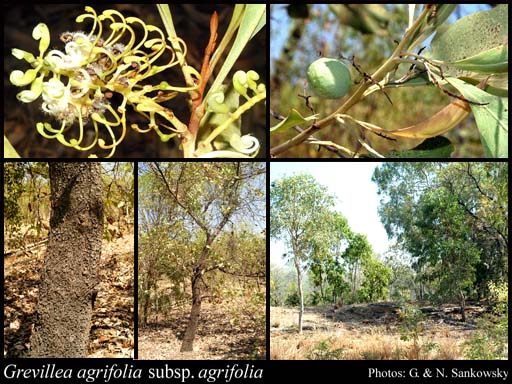- Conservation Code
- Not threatened
- Naturalised Status
- Native to Western Australia
- Name Status
- Current
Non-lignotuberous, ascending shrub, 2-6 m high. Fl. cream, Mar to Sep. Sand or loam, sandstone, quartzite, laterite, haematite. Rocky sites, near creeks, on river banks, permanent watercourses, coastal areas.







Scientific Description
Trees or Shrubs, 2-6 m high; branchlets hairy, not glaucous. Leaves alternate, 60-155 mm long, 45-75 mm wide, hairy, on the adaxial or abaxial surface, the hairs straight; lamina flat, clearly widest above the middle, once divided, pinnately divided, shallowly divided, the margins flat. Inflorescences axillary or terminal, green or cream; pedicels 2-3 mm long. Perianth 6-8 mm long; tepals all free after flower opens, glabrous; ovary hairy, stipitate, the stipe 2-4 mm long; pistil 14-19 mm long, green or white, pollen presenter oblique, style hairy. Follicles glabrous, not viscid, dehiscent, 18-24 mm long. Flowers in May, June, July, August or September. Occurs in the Northern (N) Botanical Province(s), in the Northern Kimberley (NK), Victoria Bonaparte (VB), Central Kimberley (CK), Dampierland (DL) or Ord-Victoria Plains (OVP) IBRA subregion(s).
Distribution
- IBRA Regions
- Central Kimberley, Dampierland, Northern Kimberley, Ord Victoria Plain, Victoria Bonaparte.
- IBRA Subregions
- Berkeley, Fitzroy Trough, Keep, Mitchell, Mount Eliza, Pentecost, Purnululu.
- IMCRA Regions
- Kimberley.
- Local Government Areas (LGAs)
- Derby-West Kimberley, Halls Creek, Wyndham-East Kimberley.